Who is Dan Pawson?
 Answer: a legislative aide to a Massachusetts state senator, husband, father, and University of Chicago Law School alum. In December 2007, Jeopardy! fans watched Dan Pawson, JD'06, begin a nine-game winning streak on the popular game show. He returned this past January to participate in the 2009 Jeopardy! Tournament of Champions, which aired last month. And although Pawson was happy to discuss his game-show fame with UChiBLOGo, we don't recommend mentioning the articles of the Constitution. Especially you, Professor Helmholz.
Answer: a legislative aide to a Massachusetts state senator, husband, father, and University of Chicago Law School alum. In December 2007, Jeopardy! fans watched Dan Pawson, JD'06, begin a nine-game winning streak on the popular game show. He returned this past January to participate in the 2009 Jeopardy! Tournament of Champions, which aired last month. And although Pawson was happy to discuss his game-show fame with UChiBLOGo, we don't recommend mentioning the articles of the Constitution. Especially you, Professor Helmholz.
How did you get on the show?
I got on the show by taking the online test in January 2007. The threshold to get on used to be much higher: you had to either try out in L.A. or you had to be lucky enough to be in a city that the Brain Bus visited. Now you just sign up for the online test and spend 15 minutes answering rapid-fire questions, and if you pass and they pick you, you go to a regional in-person audition, which happened for me in May 2007. Then I got the call to come on in August.
What kind of mental/intellectual preparation did you do before a show?
I don't have any great mental-stimulation techniques right before a game, but I did a lot of studying before the Tournament of Champions—world capitals, Shakespeare, opera, and a bunch of other categories that come up time and time again. A lot of them paid off!
What are your strong areas in trivia? Were there any categories you were hoping for? Any you were dreading?
I'm very strong in politics and sports and was very fortunate to get a category about baseball in the Double Jeopardy! round of the last game. That category went very, very well.
What was your favorite "answer"?
Is it too trite to say "Who is George?" the answer I won on ["Born in 1683, the second British king of this name was the last one not born in the British Isles"]? I guess it might be a clue to which I answered, "What is Buffy the Vampire Slayer?" ["Alyson Hannigan was nerd-hot as a geek-turned-witch on this series"] because I know there was a Buffy writer in the audience [sitting next to my wife] who squirmed a little when I said it.
Any I'm-kicking-myself moments?
No question—the $2,000 question asking how many articles are in the Constitution. It is to my everlasting shame that I answered "six" instead of the correct answer (seven). I just started counting them in my head—Congress, executive, judiciary, full faith and credit, supremacy, amendments—but the ratification article slipped my mind. I am never going to forgive myself for that.
Do you have any behind-the-scenes secrets to share?
For the games we were allowed to watch from the audience (in the quarterfinals, contestants that haven't played yet are sequestered), we're all quietly playing along, and virtually every one of us is phantom-buzzing. It's a disturbing compulsion.
Do you have big plans for your earnings (more than $420,000 combined)?
The $170,000 I won in my first run is mostly accounted for now—a bunch to a house fund, a car, a trip to Vegas, some charitable contributions, and I paid off a bunch of my student loans. With the quarter million from the TOC, [my wife and I] are doubling the house fund, paying off almost all of the rest of my loans, charity again, and taking a trip to Europe. The difference is that this time, we have about $20,000 with which we have no idea what we're going to do. It's a good problem to have.
Which is more nerve-wracking: Final Jeopardy! or facing the Socratic Method at the U of C Law School?
The worst thing that could happen on TV is that I embarrass myself in front of 12 million people. In law school, I could get a withering comment and stare from Professor Helmholz. I'm not sure there's anything that compares to that.
Elizabeth Chan
RELATED READING
- "On the Quads" (University of Chicago Magazine, Nov-Dec/06)
- "U of C Students Prove They Really Do Know It All" (University of Chicago Magazine, Apr/99)
RECOMMENDED LINKS
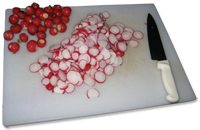
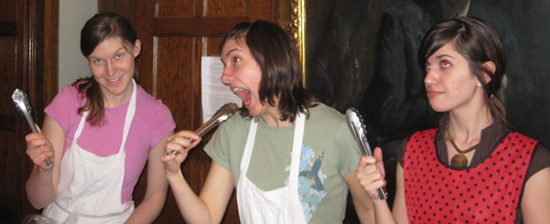
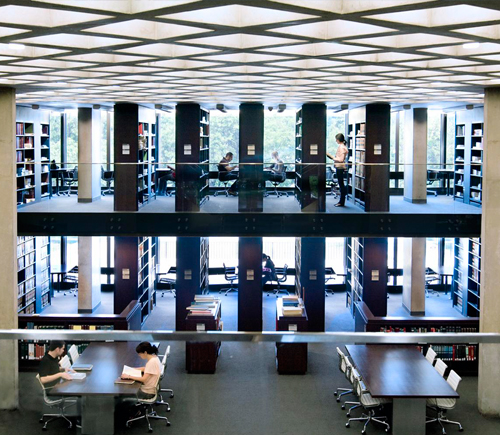
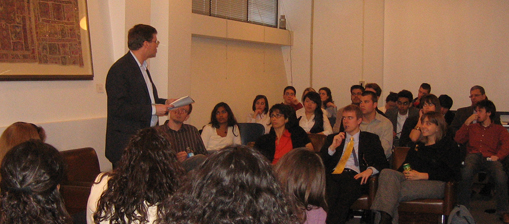
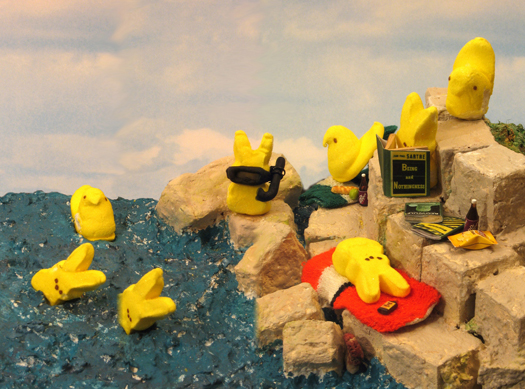

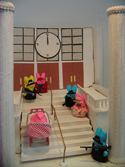
 “There are two kinds of chokes,” said Amanda Wingate, ’09, “blood chokes and air chokes. We’re going to learn both.” We started Wednesday night’s beginning Krav Maga class with air chokes, the less scary of the two, in Wingate’s opinion, because with blood chokes “you don’t know how dangerous it is until it’s too late” and the blood flow to your brain is cut off. I found air chokes intimidating enough.
“There are two kinds of chokes,” said Amanda Wingate, ’09, “blood chokes and air chokes. We’re going to learn both.” We started Wednesday night’s beginning Krav Maga class with air chokes, the less scary of the two, in Wingate’s opinion, because with blood chokes “you don’t know how dangerous it is until it’s too late” and the blood flow to your brain is cut off. I found air chokes intimidating enough.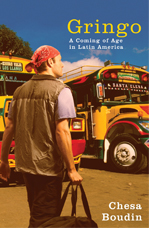 Maybe it was last week’s scathing review of his new book, Gringo: A Coming of Age in Latin America, in the New York Times. Maybe it was his hometown draw as a '99 alumnus of the Laboratory Schools. Maybe it was his famous radical parents, David Gilbert and Kathy Boudin, jailed for their activities with the Weather Underground. Whatever the reason, Chesa Boudin—author, traveler, Rhodes Scholar, and Yale law student—packed a seminar room in Kelly Hall for Monday’s lunchtime talk and book signing. His presentation, jointly sponsored by the Center for Latin American Studies and the Human Rights Program, focused on the lessons he says Americans can learn if they pay closer attention to the region’s shifting political and social movements. Boudin, 28, spent eight of the past ten years crisscrossing the continent—studying Spanish in Guatemala, descending the Cerro Rico mines in Bolivia, riding a cargo boat down the Amazon, and serving as a foreign-policy adviser to President Hugo Chávez in Venezuela. So maybe the audience showed up because they were interested in what he had to say. Here are some excerpts.
Maybe it was last week’s scathing review of his new book, Gringo: A Coming of Age in Latin America, in the New York Times. Maybe it was his hometown draw as a '99 alumnus of the Laboratory Schools. Maybe it was his famous radical parents, David Gilbert and Kathy Boudin, jailed for their activities with the Weather Underground. Whatever the reason, Chesa Boudin—author, traveler, Rhodes Scholar, and Yale law student—packed a seminar room in Kelly Hall for Monday’s lunchtime talk and book signing. His presentation, jointly sponsored by the Center for Latin American Studies and the Human Rights Program, focused on the lessons he says Americans can learn if they pay closer attention to the region’s shifting political and social movements. Boudin, 28, spent eight of the past ten years crisscrossing the continent—studying Spanish in Guatemala, descending the Cerro Rico mines in Bolivia, riding a cargo boat down the Amazon, and serving as a foreign-policy adviser to President Hugo Chávez in Venezuela. So maybe the audience showed up because they were interested in what he had to say. Here are some excerpts. The Chicago Green Homes Program has a 1,000-point scale on which you can rate your home for energy efficiency and environmental friendliness. The first time Tim Heppner proposed his plan to the city program to certify his house as a “Chicago Green Home,” he told an audience at the Divinity School lunch on Wednesday, “the guy said, ‘You can’t get this many points.’” Heppner, an Iowa native who calls himself “just a carpenter,” had designed a home scoring 882 points. The nearest proposal was somewhere in the 300s.
The Chicago Green Homes Program has a 1,000-point scale on which you can rate your home for energy efficiency and environmental friendliness. The first time Tim Heppner proposed his plan to the city program to certify his house as a “Chicago Green Home,” he told an audience at the Divinity School lunch on Wednesday, “the guy said, ‘You can’t get this many points.’” Heppner, an Iowa native who calls himself “just a carpenter,” had designed a home scoring 882 points. The nearest proposal was somewhere in the 300s.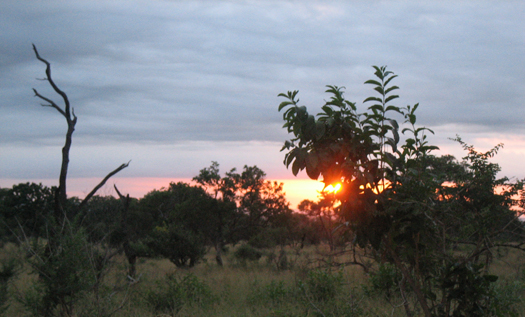
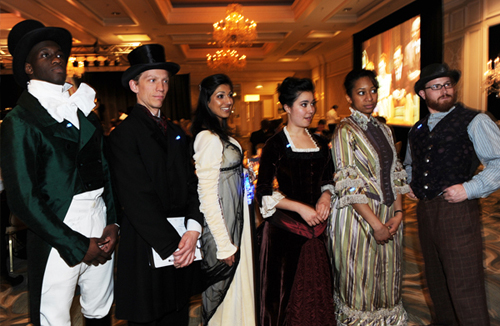
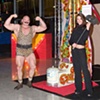 Last weekend Material Exchange—a group of four Chicago alums who breathe new life (and art) into found objects—got Hyde Parkers young and old to turn off their iPods, put down their Wiis, and step right up to their latest project, a collection of artist-made carnival games called King Ludd’s Midway Arcade.
Last weekend Material Exchange—a group of four Chicago alums who breathe new life (and art) into found objects—got Hyde Parkers young and old to turn off their iPods, put down their Wiis, and step right up to their latest project, a collection of artist-made carnival games called King Ludd’s Midway Arcade.